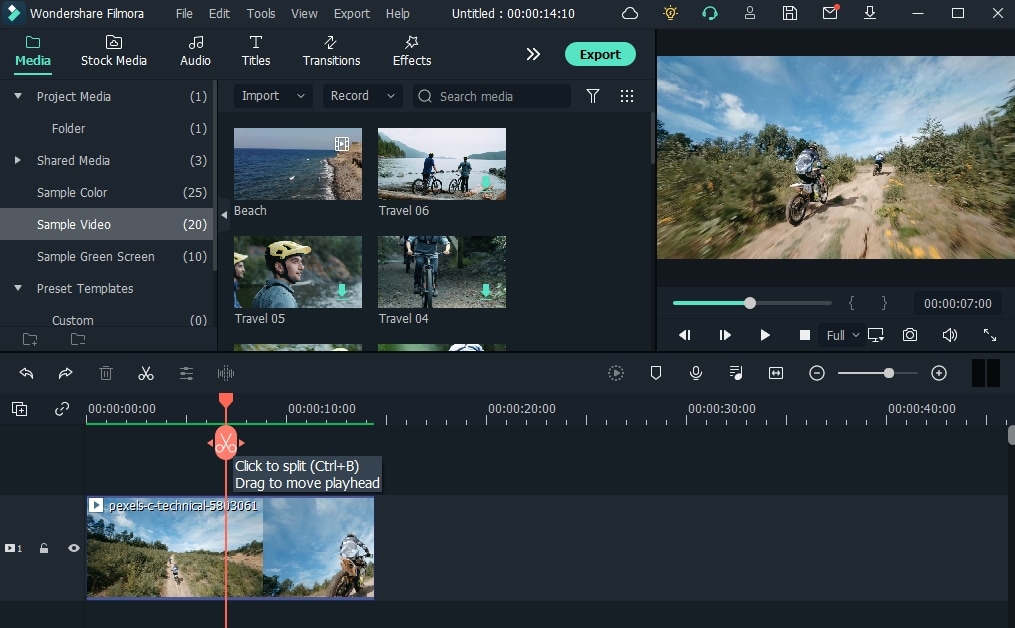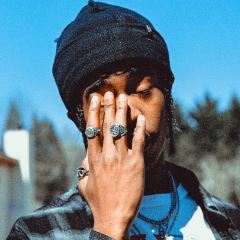
Thriving Financially with YouTube Advertising Techniques for 2024

Thriving Financially with YouTube Advertising Techniques
Monetize YouTube Videos | The Ultimate Guide to Ad Revenue
Richard Bennett
Oct 26, 2023• Proven solutions
Want to make money on YouTube? There are qualifications you have to meet before you can monetize your videos with ads, but you don’t have to have a huge channel.
Here’s everything you need to know to join the YouTube Partner Program and start earning ad revenue:
- Qualifying for the YouTube Partner Program
- How to Apply for Monetization on YouTube
- What is Ad Friendly Content?
- How to Get Paid Through AdSense
- Which YouTube Videos Get the Highest Paying Ads?
- Useful Terminology (CPM, CPV, CPC)
What is the YouTube Partner Program
YouTube’s Partner Program, or YPP, allows creators to monetize their YouTube videos through ads. If you are a YouTube Partner, that means you are earning revenue from the ads being shown before and during your videos.
Before you dive into the below guide, you may need a video editor to start your monetizing on Youtube. Filmora video editor will be the best choice.
Becoming a skilled video editor takes years of practice, but with Wondershare Filmora video editor, you can produce YouTube videos that have a professional look and feel, even if you are new to the world of video editing. This YouTube Video Creator has big icons and an intuitive interface, so those YouTubers who edit videos for the first time can quickly make a video.

Qualifying for the YouTube Partner Program
In order to qualify for YPP, you need to prove that you’re creating consistent, original, content and that people are watching your content. YouTube believes that has been proven when you reach these qualifications:
- 1000 Subscribers
- 4000 Hours of Watch Time (over the past 12 months)
Not quite there yet? Here’s a list of actionable tips that can help you grow your channel.
If you meet these requirements and are approved for monetization, but then drop below them, your channel will not be automatically demonetized. YouTube may review your content and demonetize you if you seem to have stopped posting videos, but this will not be automatic.
Remember: meeting these milestones does not grant you automatic monetization.
You can apply for YPP when you reach the milestones above, but your channel will still need to be reviewed by a human working for YouTube. Reviewers will be watching for:
- Nudity or sexual content
- Harmful, dangerous, threatening, or hateful content
- Violent or graphic content
- Harassment or cyberbullying
- Spam, scams, and misleading metadata
- Copyright infringement or impersonation
- Privacy violations
- Fake subscribers
- Other guidelines violations
If your content violates any of YouTube’s Community Guidelines you may be denied monetization. Learn more about YouTube’s Community Guidelines here.
How to Apply for Monetization on YouTube
Once you qualify for YPP, applying for monetization is easy.
- In the Creator Studio, select Channel > Status and features.
- Under ‘Monetization’, click Enable and follow the steps that appear to accept YouTube’s terms.
- Wait to be approved.
If you’re approved, you can start earning money as soon as your AdSense account is set up!
If you’re not approved, you can apply again in 30 days.
To make sure you’re approved the next time you apply, review all of YouTube’s related policies (Partner Program policies , Terms of Service , spam policies , and Community Guidelines ) and remove the content that might be holding you back.
In order to start monetizing, you’ll need to link your channel with an AdSense account. You must be over 18 to create an AdSense account. YouTube creators under 18 can link to the AdSense accounts of their parents or guardians.
Here’s how to sign up for AdSense through YouTube:
- Under Channel > Status and features in your Creator Studio, look for Paid content. Click where it says ‘active AdSense account’.
- On the following ‘Monetization’ screen, click Next to go to AdSense.
- You will be asked whether you want to use the Google account you’re already signed in to for AdSense, or if you want to use a different account.
- The next step is ‘Your Website’. This will automatically be filled in with your channel. Click Accept association if it’s right.
Note: you can only have one AdSense account. Do not make a second one if you already have one. Duplicate accounts may be banned, which will stop you from monetizing your videos.
What is Ad Friendly content?
Not all content that meets YouTube’s Community Guidelines will be considered ‘advertiser-friendly’. Companies don’t want to run ads alongside content that doesn’t match the values of their brands.
YouTube may disable ads on any video it doesn’t think is ad-friendly. Videos which may be flagged as inappropriate for ads include (but are not limited to):
- Videos that cover controversial or sensitive subjects.
- Videos depicting the use of drugs or dangerous products.
- Videos may encourage harmful or dangerous behavior.
- Videos with swearing (but not ALL videos with swearing – quantity and context are factors).
- Videos which contain hate speech.
- Videos that depict family entertainment characters (i.e. Disney princesses) engaged in inappropriate behavior (even if you’re being satirical).
If you want to make sure all of your content is advertiser-friendly, here are some best practices suggested by YouTube:
- Be respectful of your viewers and any people or groups you may include or mention in your video.
- Extend this respectful tone to your thumbnails and video titles, and make sure your thumbnails and metadata accurately depict your video’s content.
- Don’t try to monetize videos that already contain ads (i.e. paid product placement ).
How to Get Paid Through AdSense
In order to receive a payment from AdSense, you need to earn at least $100.
For example, if you only earn $10 in a month, you will not receive a payment that month. You will not lose that $10 – you will receive it when your total earnings reach or exceed $100.
You will also need to provide AdSense with tax information and verify your identity and address in order to start being paid.
The most popular way to get paid through AdSense is via an EFT (Electronic Funds Transfer). To receive your payments this way, you’ll need to link your bank account to your AdSense account.
Here’s how:
- Log in to AdSense.
- Click Settings in the menu on the left, and then select Payments.
- On the Payments page, click Manage payment options.
- Click the Add payment method.
- You’ll be prompted to add your bank account details.
- Make sure the name on your AdSense account matches the name on your bank account (if you’re under 18 and cannot make your own AdSense account, this may mean you’re using your parent or guardian’s bank account).
Which YouTube Videos Get the Highest Paying Ads?
Not all ads pay the same, and not all videos will be able to attract the ads that pay the most.
How much money your video has the potential to earn depends on:
- The size of your channel
- Your niche on YouTube
- The specific topic of the video
That the size of your channel matters probably isn’t a surprise. The biggest brands want to run their ads beside videos that are getting more views.
Whether or not your YouTube niche has a high potential for profit will depend on a couple things:
- How many other channels are in your niche?
The more people there are making similar videos to you, the thinner the available ads are spread.
- How many cheap or expensive products are being advertised in your niche?
If the products are free or inexpensive (i.e. free online games) then that limits your earning ability. In large niches like gaming, the few higher paying ads will go to the most popular channels and the low-paying ads will be spread amongst everyone else.
If you have a very specific niche, i.e. luxury cars, then you will have less competition and the ads available will likely be for more expensive products (and thus the ads themselves will be higher paying).
Even if you are in a large niche, you can still make videos on specific topics designed to attract higher-paying ads and more revenue. Pay attention to the analytics in your Creator Studio to learn which of your videos earn the most. Then, make more videos on similar topics to boost your earnings.
Another factor that can affect what ads appear alongside your videos is the viewing habits of individual viewers. People are shown ads that YouTube believes are more relevant to their interests.
Useful Terminology (CPM, CPC, CPV)
A lot of people think your ad revenue is determined by your view count. This isn’t true – it’s determined by ad impressions.
How much revenue you earn from the ads running around your videos depends on these three things:
CPC: ‘cost per click’. Most of the ads on YouTube are CPC, meaning that an ad impression is only recorded when an ad is clicked on.
CPV: ‘cost per view’. Skippable pre-roll ads are the only ads on YouTube which record ad impressions without clicks. These ads record ad impressions when viewers watch 30 seconds of the ad instead of skipping it.
CPM: ‘cost per mille’ or ‘cost per thousand’. This refers to how much money gets paid out for 1000 ad impressions.
Your CPM will be affected by a multitude of things including the ads themselves and the size of your channel. AdSense has made it a rule that you cannot disclose your CPM to anyone, which makes it difficult to determine what you should expect.
Note: never click on ads near your own videos or instruct your viewers/friends to do so. If your clicks are higher than what AdSense considers normal they may ban you.
Sites like Social Blade provide estimated earnings for any channel you want to look up. Looking up channels that are where you plan to be in the near future could help you set your own expectations.
Are you able to monetize your videos? How many more subscribers or hours of watch time do you need?

Richard Bennett
Richard Bennett is a writer and a lover of all things video.
Follow @Richard Bennett
- Title: Thriving Financially with YouTube Advertising Techniques for 2024
- Author: Eric
- Created at : 2024-07-29 15:04:43
- Updated at : 2024-07-30 15:04:43
- Link: https://youtube-sure.techidaily.com/ing-financially-with-youtube-advertising-techniques-for-2024/
- License: This work is licensed under CC BY-NC-SA 4.0.



